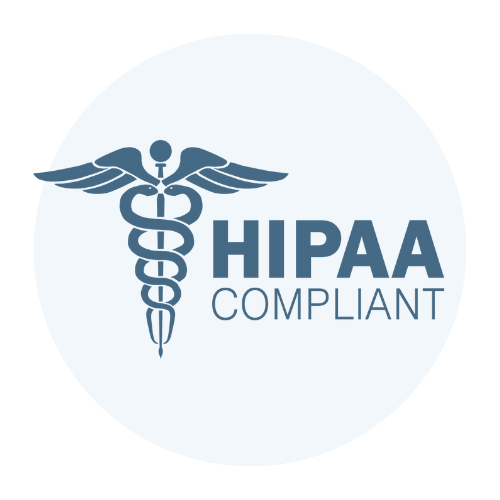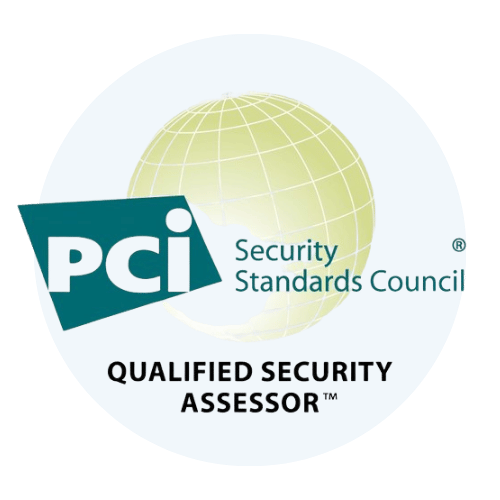The Truth About PCI DSS: Shattering Myths and Misconceptions

PCI DSS, or the Payment Card Industry Data Security Standard, is a set of security requirements designed to protect cardholder data and ensure secure transactions. For businesses like yours, understanding these standards isn’t just a good idea — it’s a necessity. Yet, many are misled by myths that make compliance seem daunting or irrelevant. That’s why we’re committed to debunking these myths, helping you grasp the true scope of PCI DSS, and guiding you through your compliance journey. Regardless of your business size, you must be aware of the facts. Our goal is for you to approach PCI DSS with confidence and awareness. With TrustNet by your side, you can turn compliance from a challenge into an opportunity to strengthen your security posture. Myth 1: PCI DSS Only Applies to Large Businesses Let’s address a common misconception: PCI DSS is often thought to be the domain of large corporations, leaving smaller businesses to believe they’re off the hook. This is simply not true. If your business handles cardholder data — whether you’re a bustling cafe or a burgeoning e-commerce store, PCI DSS applies to you. The Relevancy of PCI DSS Here’s why PCI DSS is relevant to everyone: Universal Application: PCI DSS is designed to protect cardholder data across the board. Whether you process ten transactions a day or ten thousand, the standard applies. Risk Prevention: Small businesses are often targets for cyber threats because they might not have the robust defenses of bigger companies. Complying with PCI DSS helps mitigate these risks. Building Trust: When customers know you adhere to PCI DSS guidelines, it boosts their confidence in your ability to keep their data safe, enhancing your business’s reputation. Now, you might be wondering, “What does this mean for my small business?” It means that being PCI DSS compliant isn’t just about ticking a box, it’s about safeguarding your customers and your business. Remember, compliance isn’t just for the big players. It’s for anyone who wants to ensure their business is not only compliant but also secure and trustworthy. For more on our PCI DSS services, Click Here Myth 2: PCI DSS Requires Annual Audits Let’s dive into another myth that often causes confusion: the belief that PCI DSS requires annual audits for everyone. It’s easy to see where this misconception comes from, but the reality is a bit more nuanced. Understanding the difference between PCI DSS compliance and validation is key to demystifying this issue. Understanding Compliance vs. Validation First, let’s clarify the terms: PCI DSS Compliance: This is about adhering to the security standards set by PCI DSS to protect cardholder data. Compliance is an ongoing process that involves maintaining security protocols year-round. PCI DSS Validation: This is the process of proving your compliance, often through assessments or audits, depending on your business’s size and transaction volume. When Are Audits Necessary? Every business must validate and report on its compliance status annually, whether through an annual audit or a Self-Assessment Questionnaire (SAQ). The need for audits or assessments also depends on several factors: Business Size and Transaction Volume: Larger businesses with higher transaction volumes are more likely to undergo a full audit, while smaller businesses typically complete an SAQ annually. Merchant Level: PCI DSS categorizes businesses into different merchant levels based on transaction volume, determining the type and frequency of the required validation. Risk Profile: Businesses with a history of data breaches or security issues might face more rigorous assessments to ensure compliance. Myth 3: PCI DSS is a One-Time Effort It’s a common misconception to think of PCI DSS as a checkbox exercise, something you complete and then forget. However, compliance is an ongoing journey, not a one-time destination. The Continuous Nature of Compliance When it comes to PCI DSS, staying compliant means being vigilant every day. It isn’t just about passing an audit or meeting a deadline. Rather, it’s about embedding security into the very fabric of your business operations. Here’s why: Ongoing Monitoring: You need to keep an eye on your systems constantly. Regular monitoring helps identify vulnerabilities before they become serious issues. Continuous Remediation: As threats evolve, so should your defenses. This means regularly updating your security measures and addressing any weaknesses identified. Staying Up-to-Date The world of data security is dynamic, and PCI DSS standards evolve to meet new challenges. Staying informed about updates and best practices is crucial: Regular Updates: Standards may change, reflecting new technologies or emerging threats. Keeping up to date ensures your business remains protected. Best Practices: Following industry best practices helps you not only comply with PCI DSS but also strengthens your overall security posture. Embracing Best Practices Adhering to best practices is essential for maintaining PCI DSS compliance. Here are some key practices to incorporate into your operations: Data Encryption: Always encrypt cardholder data to protect it from unauthorized access. This is a fundamental step in securing sensitive information. Access Control Measures: Limit access to cardholder data to only those whose job requires it. Implement strong access control measures to ensure this. Regular Security Testing: Conduct frequent security and vulnerability assessments to identify and mitigate potential risks before they become significant problems. Incident Response Planning: Develop and maintain an incident response plan. This ensures you’re prepared to respond swiftly and effectively to any security breaches. By integrating these best practices into your daily operations, you’re not just meeting compliance requirements, you’re building a robust security framework that enhances trust and reliability. Myth 4: PCI DSS is Too Complex and Expensive Many businesses fear the complexity and potential costs involved in PCI DSS compliance, but the truth is, it doesn’t have to be daunting or break the bank. Understanding the Complexity PCI DSS may seem complex but understanding its core purpose can simplify things. It’s designed to protect cardholder data and ensure secure transactions. Here’s how you can break down this complexity: Focus on Fundamentals: Start with the basics of PCI DSS requirements. Understanding these core aspects can help clarify what’s necessary for your business. Streamline
Need a Penetration Testing Quote? Get a Free Estimate Today

Around the world, a data breach costs $4.88 million on average in 2024. This alarming figure serves as a stark reminder of the vulnerabilities lurking in digital systems. To find gaps in your security architecture, penetration testing imitates an assault on your systems, applications, or networks. This is a security process of assessing your computer system’s apps for vulnerabilities and susceptibility to threats. It is also commonly referred to as pen testing or ethical hacking. Penetration testing uses the same techniques as an outside hacker to find weaknesses before they become evident. Even in the absence of vulnerabilities, the tests highlight a system’s strengths and increase confidence in its security. By the end of this article, you’ll understand how implementing penetration tests can fortify your security and protect your business from costly breaches. What is Penetration Testing? Penetration testing, often referred to as a pen test, is like a friendly hacker trying to break into your systems, but with your permission. It’s a simulated cyber-attack designed to uncover vulnerabilities in your security setup — think of it as your system’s health check. Whether it’s an IP address range, a specific application, or your entire organizational structure, pen tests aim to identify weak spots before real hackers can exploit them. Why is Penetration Testing Important? Penetration testing is an essential element of protection for businesses of all sizes. It gives you insights into potential ways that hackers may obtain sensitive data without authorization. Understanding the vulnerabilities in your system will help you strengthen your defenses and prevent the high costs of data breaches. When to Perform Penetration Testing The timing of penetration tests depends on several factors: Your Online Presence: Larger digital footprints could mean more frequent testing. Budget: Testing should fit within your financial plans without compromising security. Regulation and Compliance: Certain industries have specific requirements. IT Infrastructure: Whether your systems are cloud-based could also influence the frequency. It’s essential that tests are customized to your specific goals and industry needs. Follow-up reports should clearly outline what was tested and highlight vulnerabilities. By doing so, you’ll ensure your business is not just secure but resilient against evolving threats. Learn more about our Penetration Testing services Here Benefits of Penetration Testing Let’s explore how penetration testing benefits your organization: – Identifying Vulnerabilities First and foremost, penetration testing shines a light on the hidden cracks in your security armor. Pen testing can identify security gaps that you might not even be aware of by simulating actual attacks. With this proactive strategy, you can rank these vulnerabilities in order of importance and make sure that hostile actors can’t take advantage of them first. – Assessing Risks Understanding your risk level is essential for any business. Penetration testing provides a comprehensive view of your security posture, helping you grasp the potential impact of vulnerabilities. By evaluating how these weaknesses could be exploited, you gain a clearer picture of your overall security health. – Complying with Regulations In today’s regulatory landscape, compliance isn’t just recommended — it’s often required. Penetration testing assists in meeting these requirements, aligning your security practices with standards like PCI DSS. By conducting regular tests and scans, you not only ensure compliance but also demonstrate your commitment to maintaining a secure environment. This can be especially crucial after significant changes to your systems or on a routine basis to keep up with quarterly assessments. Additional Benefits of Penetration Testing Boosting Confidence: Knowing your systems are secure enhances trust among stakeholders and clients. Budget Planning: By understanding where vulnerabilities lie, you can better prioritize your security budget. Staff Awareness: Regular testing keeps your team alert and aware of the latest security protocols. Incident Readiness: Evaluating incident response plans through testing prepares you for potential breaches. At the end of the day, penetration testing isn’t just a task to check off your list — it’s a cornerstone of a robust security strategy. How Does Penetration Testing Work? Let’s walk through the penetration testing process together so you know exactly what to expect. Scoping Before diving in, it’s crucial to set the stage with a clear scope. This is where you and your team, alongside the pen testers, draft a pre-engagement contract. Think of it as your blueprint: it lays out the rules, priorities, timeframes, and methods for the test. This agreement not only ensures everyone is on the same page but also provides legal protection for the testers as they dig into your systems. Reconnaissance Next comes reconnaissance — essentially, the detective work of penetration testing. During this phase, organizations select a penetration tester, prioritize the systems to be tested, and address any planning issues. After that, you may decide what kind of test you wish to do and provide relevant IT infrastructure data. Penetration Attempt Now, the real action begins. Testers will look into your system and then begin trying to find vulnerabilities. In the end, they want to show you how far they can penetrate your environment. Additionally, you ought to determine what an outside hacker could be doing with your system, such as: Deleting, altering, or pilfering confidential information from an organization Transferring company funds across multiple accounts replicating data from client accounts Tarnishing a brand through altered text on the web or social media logins Reporting Once the testing is complete, a comprehensive report is crafted. This document is your roadmap to improvement. Once within your network, testers will try to break into your system and collect information. They’ll include it in a report that describes how they broke into your system, what security holes there are, and how to fix them. Re-Testing Finally, after implementing the recommended changes, re-testing becomes a vital step. It ensures that any vulnerabilities have been adequately addressed and that your systems remain secure. Regular re-testing is not just a good practice — it’s often necessary for compliance, especially if you’ve made significant changes to your infrastructure, like OS upgrades or cloud migrations. Types of Penetration Testing There are different methodologies when it comes
Artificial Intelligence (AI) in Threat Intelligence

Cyber threats are evolving rapidly, and every day you delay bolstering your defenses is a day closer to potential disaster. But here’s the good news: AI is reshaping the threat intelligence landscape, offering you unparalleled insights and protection. By understanding these threats, you can make smarter decisions about protecting your valuable assets. With AI, you can expect: Quick identification of threat patterns Predictive insights that keep you ahead Smart prioritization of risks iTrust from TrustNet is leading the charge in this AI revolution. We understand the hurdles you face in cybersecurity and are dedicated to helping you overcome them. Our AI-powered solutions are designed to enhance your threat intelligence capabilities. Understanding AI and Machine Learning Let’s start with the basics. AI is about machines performing tasks that typically require human intelligence. Think of it as machines turning into quick learners capable of understanding speech, making decisions, and even recognizing patterns. Diving into Machine Learning Machine learning is a special part of AI. It’s the branch that allows computers to learn and get better without someone having to program every step. It’s like teaching a computer to spot patterns and improve over time, just like you would when learning a new skill. The journey of machine learning started with simple algorithms and has now grown into complex systems capable of processing massive datasets. How Does AI Fit Into Cybersecurity? Now, how does this tech magic help in cybersecurity? AI algorithms are built to handle some of the most complex issues you encounter. Here’s a quick look at their capabilities: Anomaly Detection: AI can scrutinize network traffic to detect unusual patterns, alerting you to potential threats before they escalate into significant issues. Predictive Analysis: By analyzing historical data, AI can forecast future cyber threats, allowing you to prepare and respond proactively. Automated Responses: Say goodbye to the days of constant manual monitoring. AI can automate threat responses, ensuring swift action while saving you time and effort. Behavioral Analysis: AI can monitor user behavior to identify deviations that might indicate security breaches, adding an extra layer of protection. Threat Intelligence Sharing: AI can facilitate the sharing and analysis of threat intelligence data across organizations, enhancing collective defense mechanisms. AI and machine learning technologies have the potential to transform how you defend against cyber threats, offering both cutting-edge solutions and peace of mind. How iTrust Leverages AI for Threat Intelligence iTrust harnesses the power of AI to revolutionize threat intelligence, making it more dynamic and precise than ever before. iTrust is at the forefront of enhancing cybersecurity by delivering risk ratings and intelligence that empower businesses to build confidence with their vendors, partners, and suppliers. — Sophisticated AI Technologies at Work We employ advanced machine learning techniques that are designed to handle and interpret massive datasets. This sophisticated approach allows us to automate the traditionally manual process of building analytical models for cyber risk assessment. By focusing on algorithmic learning, we can deliver highly accurate cyber risk ratings that help you understand your vulnerabilities better. — Enhancing Data Collection and Analysis AI doesn’t just collect data — it transforms it into actionable insights: Identification of Vulnerabilities: Our state-of-the-art data analysis methods dig deep into data to uncover vulnerabilities that might not be immediately obvious. This ensures that you’re always aware of potential weaknesses in your defenses. Predictive Insights: We go beyond assessing current risks. Our AI provides predictive insights that allow you to anticipate future threats and prepare accordingly. — Pattern Recognition and Anomaly Detection AI excels at recognizing patterns and spotting anomalies: Real-time Risk Ratings: Our algorithms continually update cyber risk ratings in real-time, giving you the latest information on which to base your decisions. Proactive Risk Management: With our predictive risk ratings, you can shift from a reactive to a proactive security posture. This means you’re not just responding to threats but actively preparing for them. Efficient Resource Allocation: Understanding potential future threats allows you to allocate resources more effectively, prioritizing areas of highest risk to ensure your cybersecurity efforts are impactful. By integrating advanced AI technology, we help ensure that your cybersecurity measures remain robust and adaptive, meeting the demands of an ever-changing digital landscape. Benefits of AI-Powered Threat Intelligence With AI-powered threat intelligence, you gain a robust ally in protecting your digital assets. Here’s how: 1. Improved Speed and Accuracy AI excels at processing vast amounts of data at lightning speed, ensuring threats are detected with unmatched accuracy. This rapid detection allows you to act decisively, minimizing potential damage. Picture a scenario where a new malware variant is on the prowl. AI identifies this threat in real-time, allowing for immediate intervention. The result? Your systems remain secure, and your peace of mind is intact. 2. Early Identification of Emerging Threats AI’s ability to recognize patterns and anomalies offers a proactive approach to threat management. It’s like having a radar that picks up on threats before they fully materialize. Consider how AI can spot unusual login attempts or data access patterns that might suggest a looming attack. By addressing these early indicators, you prevent small issues from spiraling into major incidents. 3. Automating Routine Tasks Let’s talk about efficiency. AI automates the repetitive, mundane tasks that often bog down your team. By handling tasks like log analysis and threat database updates, AI frees your analysts to focus on strategic initiatives. Imagine the possibilities when your skilled team can dedicate their energy to developing advanced security strategies instead of being tied down by routine monitoring. This shift not only enhances productivity but also elevates your overall security posture. Adopting AI-powered threat intelligence isn’t just about keeping threats at bay, it’s about transforming your security framework into a dynamic, anticipatory force. By leveraging AI, you’re not simply reacting to cyber threats; you’re proactively shaping a resilient and adaptive defense strategy. Recognitions and Impact of AI in Threat Intelligence with iTrust Our commitment to leveraging AI to address complex threat intelligence challenges has not gone unnoticed. We’ve received numerous accolades that underscore our
Integrating SOC 2 with Global Compliance Standards
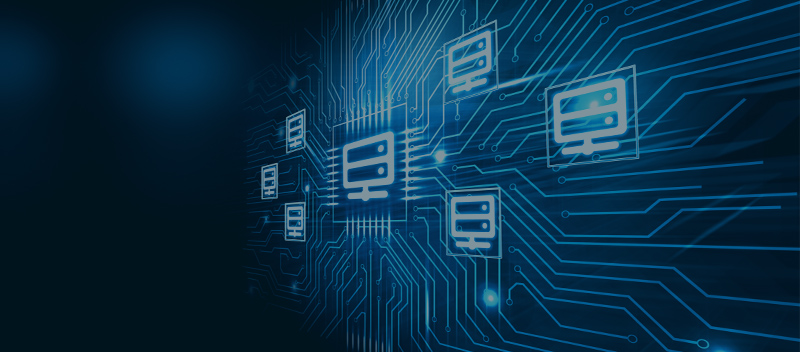
Ensuring compliance with multiple frameworks can feel like navigating a labyrinth. If you’re a part of an organization that’s already SOC 2 compliant or considering adding more certifications like HIPAA, PCI DSS, or GDPR to your repertoire, you’re not alone. For businesses like yours, understanding how SOC 2 can be seamlessly integrated with other compliance frameworks is essential. Not only does it streamline processes, but it also enhances your overall security posture. We’re here to guide you through the complexities of this integration, offering practical strategies and insights to help you achieve a unified approach to data security. At TrustNet, we pride ourselves on being your trusted advisors in this journey, ready to support you every step of the way. Understanding SOC 2 and Other Frameworks SOC 2 Compliance is meeting the standards the American Institute of Certified Public Accountants (AICPA) sets for managing customer data. This management is evaluated based on five Trust Services Criteria. SOC 2 Compliance is built around the five “trust service principles,” namely security, availability, processing integrity, confidentiality, and privacy. Security. Information and systems are protected against unauthorized access, unauthorized disclosure of information, and damage to systems that could compromise the availability, integrity, confidentiality, and privacy of information or systems and affect the entity’s ability to achieve its objectives. Security refers to the protection of i. information during its collection or creation, use, processing, transmission, and storage, and ii. systems that use electronic information to process, transmit or transfer, and store information to enable the entity to meet its objectives. Controls over security prevent or detect the breakdown and circumvention of segregation of duties, system failure, incorrect processing, theft or other unauthorized removal of information or system resources, misuse of software, and improper access to or use of, alteration, destruction, or disclosure of information. Availability. Information and systems are available for operation and use to meet the entity’s objectives. Processing Integrity. System processing is complete, valid, accurate, timely, and authorized to meet the entity’s objectives. Confidentiality. Information designated as confidential is protected to meet the entity’s objectives. Confidentiality addresses the entity’s ability to protect information designated as confidential from its collection or creation through its final disposition and removal from the entity’s control in accordance with management’s objectives. Privacy. Personal information is collected, used, retained, disclosed, and disposed of to meet the entity’s objectives. SOC 2 is essential for ensuring the security and reliability of data. In an increasingly digital environment, it helps organizations set up and uphold strong standards for data protection, fostering trust with stakeholders and consumers. Common Compliance Frameworks Organizations frequently encounter several other significant frameworks, each with unique requirements: HIPAA (Health Insurance Portability and Accountability Act): Primarily affects healthcare organizations, including providers, insurers, and their business associates’ by setting the standard for protecting sensitive patient information. Compliance involves implementing security measures, conducting regular risk assessments, and ensuring patient data is handled with confidentiality and integrity. GDPR (General Data Protection Regulation): Applies to any organization processing personal data of EU citizens. It requires stringent data protection measures, transparency in data handling, and provides individuals with rights over their personal information. The challenge lies in consistently applying these rules across multiple jurisdictions. PCI DSS (Payment Card Industry Data Security Standard): Focuses on securing credit card transactions and applies to any organization that handles cardholder data. Organizations must adopt secure data storage, encryption, and regularly monitor and test networks to prevent fraud and data theft. Overlaps and Synergies Understanding how SOC 2 aligns with these frameworks can streamline your compliance efforts and bolster your security posture: Privacy Alignment: Both SOC 2 and GDPR emphasize the importance of privacy. By aligning these frameworks, you can ensure that privacy policies are robust and compliant across different regions. Data Security and Confidentiality: SOC 2’s confidentiality principle is in harmony with HIPAA’s requirements. Leveraging this overlap ensures that sensitive health information is doubly protected under both standards. Security Measures: PCI DSS and SOC 2 have stringent security requirements, which can be coalesced to create a unified approach to securing payment and other sensitive data. By recognizing and utilizing these overlaps, you can reduce redundancy, optimize your compliance processes, and enhance your overall data protection strategy. For more on our SOC 2 compliance services Challenges of Integrating Multiple Frameworks Managing compliance with multiple frameworks is no small feat. The complexities involved demand careful navigation and strategic planning. Let’s explore some of the common challenges you might face and why a unified approach is vital. Complexities of Compliance Management Each framework has its own set of requirements, documentation, and audit processes. This complexity can lead to: Resource Strain: Allocating sufficient resources to meet the demands of each framework can stretch your team’s capabilities. Cost Implications: The financial burden of maintaining compliance across multiple standards can be significant, impacting your bottom line. Time Consumption: Compliance efforts often require a substantial time investment, taking focus away from core business operations. Potential Conflicts and Redundancies When dealing with multiple frameworks, conflicts and redundancies can arise, complicating your compliance efforts: Conflicting Requirements: Some frameworks may have contradictory requirements, making it challenging to develop a cohesive compliance strategy. Duplicate Efforts: Without proper alignment, you might find yourself duplicating tasks, such as conducting similar risk assessments or implementing redundant security controls. Data Management Issues: Handling data according to different standards can lead to inconsistencies and errors in data processing and storage. Importance of a Unified Approach A unified approach to data security is not just beneficial; it’s essential. By integrating frameworks, you can: Streamline Processes: Aligning frameworks can reduce redundancy, saving time and resources. Enhance Security Posture: A cohesive strategy ensures that all aspects of data security are addressed comprehensively, reducing vulnerabilities. Simplify Audits: A unified approach makes it easier to demonstrate compliance during audits, as documentation and processes are streamlined. By adopting a unified strategy, you can navigate the challenges with confidence and ensure that your organization remains secure and compliant. Benefits of Integrating SOC 2 Integrating SOC 2 into your compliance strategy offers
Safeguarding the Digital Economy: A Deep Dive into Fintech Cybersecurity
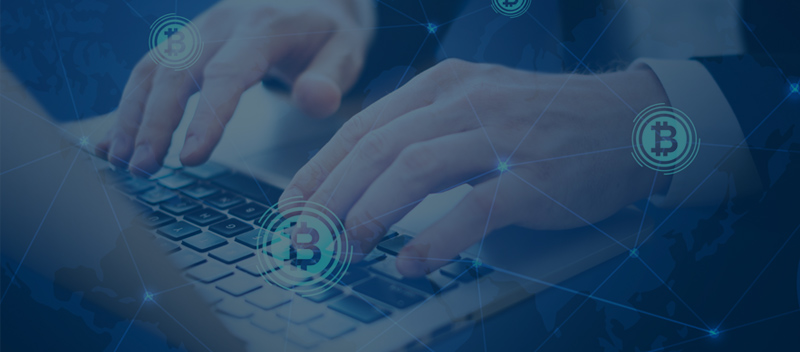
As the fintech industry continues its rapid growth, companies are redefining how you handle money with innovations like mobile payments and blockchain technology. These advancements are becoming the new norm, driving a significant shift in the digital economy. However, with this progress, there’s a rise in unique cybersecurity risks specifically targeting the fintech sector. At TrustNet, we understand that fintech cybersecurity is crucial and requires constant attention and advanced solutions. This guide delves into the world of fintech cybersecurity, highlighting best practices, emerging threats, and pioneering strategies to help protect the digital economy and keep your assets secure. The Unique Landscape of Fintech Cybersecurity In the ever-evolving world of fintech, cybersecurity is more than just a buzzword — it’s a crucial aspect of your business operations. Data Sensitivity Your financial data isn’t merely figures; it’s a treasure trove for cybercriminals. Financial data security is paramount because a breach can led to severe consequences, namely, identity theft, financial losses, and a tarnished reputation. In recent years, we’ve seen high-profile breaches where customers’ sensitive information was exposed. Such incidents underscore the importance of robust data security measures. Regulatory Compliance Fintech isn’t for the faint-hearted, especially when it comes to regulations. Fintech regulatory compliance means keeping up with a constantly shifting set of rules aimed at protecting your data and ensuring fair play. Key regulations like the General Data Protection Regulation (GDPR) set stringent guidelines on how you must handle personal data, emphasizing transparency and user consent. Meanwhile, the Payment Card Industry Data Security Standard (PCI DSS) mandates strict security protocols to safeguard payment card information. Emerging Technologies Innovation is the heartbeat of fintech, with technologies like blockchain and AI leading the charge. However, with great power comes great responsibility: Blockchain: The decentralized nature of blockchain offers enhanced security by eliminating a single point of failure. But this also introduces new vulnerabilities, such as the risk of attacks where malicious entities gain control of the network. Smart contracts, while automating processes, can be exploited if not coded securely. Artificial Intelligence: AI is a double-edged sword in cybersecurity. On one hand, AI can bolster your defenses by identifying threats faster than traditional methods. On the other hand, it can be weaponized by attackers to create sophisticated phishing schemes or to bypass security protocols. By understanding the unique cybersecurity landscape of fintech, you not only protect your assets but also position your business to thrive in this dynamic digital world. Learn more about our Managed Security Services Here Key Cybersecurity Threats in Fintech Cybersecurity threats are a major concern in the fast-moving world of fintech, and staying aware of them is key to maintaining trust and security. — Phishing and Social Engineering Phishing attacks and social engineering tactics are rampant, aiming to deceive both fintech customers and employees. These threats exploit human psychology, tricking people into divulging sensitive information. Most of the time, this email looks like it’s from your bank, urging you to verify your account details. — Data Breaches Data breaches are a violation of trust rather than merely a technological error. A breach of client data may result in large financial losses as well as harm to the public perception of your business. Imagine the impact on customer confidence when their personal information is leaked. — Third-Party Risk Management Managing risks associated with third-party vendors is another critical aspect of fintech cybersecurity. With numerous partners and service providers involved, the fintech ecosystem is inherently complex. Third-party risk management involves ensuring that these partners adhere to the same security standards as your organization. By addressing these critical cybersecurity threats directly, you can protect your fintech operations and safeguard customer trust. Essential Cybersecurity Measures for Fintech Navigating the fintech landscape means staying a step ahead of potential threats. Here are some essential cybersecurity measures to protect your business and your customers: 1. Strong Authentication and Access Controls Authentication and access controls are crucial for safeguarding sensitive data. Implementing multi-factor authentication and strict access permissions can significantly reduce unauthorized access. Think of them as the lock and key to your digital assets, ensuring only the right people have entry. 2. Encryption In the digital age, data is the lifeblood of your operations. Encryption acts as your first line of defense, protecting data both at rest and in transit. Whether it’s customer records or transaction details, encryption ensures that data remains confidential and secure. 3. Regular Security Assessments Security assessments help you identify vulnerabilities before they become threats. Regularly reviewing your security posture allows you to address risks proactively. It’s akin to a routine health check-up for your systems, ensuring any weaknesses are patched up promptly. 4. Incident Response Planning Even with the best defenses, incidents can occur. Having a robust incident response plan is vital for mitigating the impact of cyberattacks. It’s about knowing who to call and what steps to take when things go awry. A well-defined plan minimizes downtime and damage, helping you recover swiftly and maintain customer trust. Leveraging Technology for Enhanced Security While we mentioned that technologies like AI and blockchain come with their own challenges, this section focuses on how their benefits can significantly outweigh the negatives. Let’s explore how innovations like AI and blockchain are revolutionizing cybersecurity today. AI and Machine Learning Harnessing the power of AI and machine learning in cybersecurity allows for advanced threat detection and prevention. These technologies work tirelessly behind the scenes, identifying anomalies that signal potential threats. AI and machine learning enhance your ability to detect and respond to threats swiftly, safeguarding your business and customer data. Threat Detection: AI algorithms analyze large volumes of data to spot unusual patterns, providing early warnings of cyber threats. Anomaly Detection: Machine learning models learn from historical data to identify deviations that might indicate security breaches. Fraud Prevention: Predictive analytics help anticipate fraudulent activities, allowing you to take preemptive actions. Blockchain Technology Blockchain technology is revolutionizing transparency and data security. Blockchain improves security by decentralizing data storage, which almost eliminates the possibility of a single point
Elevate Cyber Defense: GhostWatch’s Cutting-Edge Risk Management Solutions
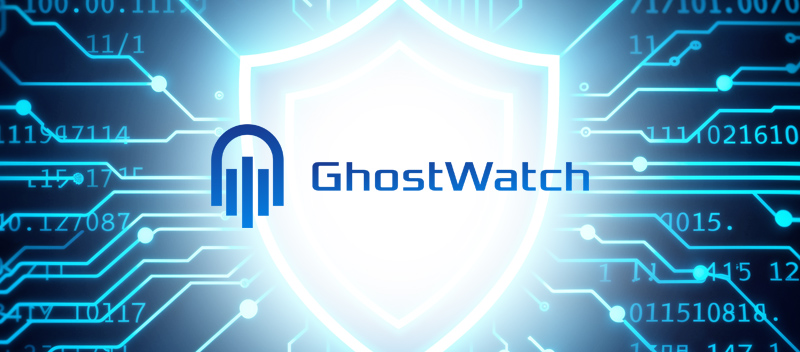
Organizations today still face a great deal of difficulty protecting their assets in the face of increasingly sophisticated cyber threats. As these threats evolve, the demand for advanced risk management solutions is more critical than ever. Enter GhostWatch—a cutting-edge cybersecurity solution designed to empower businesses to stay ahead of evolving threats. By leveraging state-of-the-art technologies, GhostWatch not only addresses the complexity of cybersecurity threats but also provides organizations with the tools and expertise needed to manage risks. This feature article explores how GhostWatch integrates advanced risk management techniques, enabling organizations to gain a comprehensive understanding of their security posture and proactively mitigate risks. The Limitations of Traditional Methods Relying on traditional risk management methods can leave organizations vulnerable to sophisticated threats. These conventional approaches, often rooted in manual processes and outdated assessments, struggle to keep pace with the dynamic nature of today’s cyber environment. Traditional risk analysis techniques, such as spreadsheets and manual evaluations, present a series of challenges: Time-consuming and Resource-intensive: The manual nature of these processes demands significant time and effort, pulling valuable resources away from more strategic initiatives. This not only slows down response times but also increases the likelihood of missing critical vulnerabilities. Human Error and Bias: With data management and interpretation left to individuals, there is a heightened risk of errors and subjective biases. These can distort findings and lead to misinformed security decisions. Lack of Granularity: Traditional methods often fail to capture the nuanced differences between risks. For example, the financial impact of a cybersecurity breach can vary greatly depending on the attack’s scale and the sensitivity of the compromised data. Without accounting for these factors, risk assessments can be misleading. Inadequate Consideration of External Factors: Many traditional approaches overlook significant external influences like market shifts or regulatory changes, which can dramatically alter risk profiles. This oversight can result in a skewed perception of potential financial impacts. Over-reliance on Historical Data: While historical data provides a foundation, it often doesn’t reflect current technological advancements or market dynamics. This reliance can render risk assessments obsolete, leaving organizations unprepared for emerging threats. By embracing innovative technologies such as GhostWatch, organizations can gain a clearer, more comprehensive understanding of their security landscape, ensuring they remain resilient against evolving threats. Learn more about our Managed Security Services Here Introducing GhostWatch: A Game-Changer in Risk Management GhostWatch stands out as an innovative solution, redefining how organizations manage risks. By leveraging advanced data analytics, GhostWatch transforms raw security data into actionable insights, enabling businesses to stay ahead of potential threats. — Advanced Data Analytics At the heart of GhostWatch is its ability to harness advanced data analytics. This robust feature helps obtain a thorough understanding of an organization’s security landscape by collecting and analyzing massive volumes of security data. GhostWatch ensures security teams have access to up-to-date information without putting them under the strain of manual data entry by automating data collection, which makes the process precise and efficient. — Continuous Threat Monitoring In a world where cyber threats evolve by the second, real-time monitoring is crucial. GhostWatch is a leader in threat monitoring, constantly checking systems for flaws and emerging risks. By taking a proactive stance, companies may ensure that issues are handled before they develop and minimize possible harm by responding quickly. — Risk Prioritization Framework Understanding that not all risks carry the same weight, GhostWatch employs a sophisticated risk prioritization framework. Security teams can concentrate their efforts where they are most required thanks to this methodology, which assesses hazards according to their likelihood and severity. Through strategic resource allocation, businesses may improve their entire security posture by efficiently prioritizing threats. GhostWatch turns risk management from a difficult task into a simple, effective procedure. With its cutting-edge capabilities, it gives businesses the confidence to confidently navigate the constantly shifting cybersecurity landscape while providing a strong defense against new and emerging threats. Deep Dive: Advanced Techniques with GhostWatch GhostWatch provides a comprehensive suite of tools to assist businesses in strengthening their defenses. Here’s a closer look at how these techniques serve your cybersecurity strategies: 1. Security Monitoring GhostWatch’s intuitive dashboard delivers full visibility into threats, incidents, and compliance management, ensuring continuous oversight. With Security Event Management, it efficiently monitors every event using SIEM, event correlation, vulnerability assessments, and intrusion detection. 2. Threat Management Our platform excels in synchronizing threat detection, incident response, and management for swift remediation. Advanced Endpoint Threat Detection and Prevention, alongside Intrusion Detection and Ransomware Detection, ensure that threats are identified and mitigated promptly. 3. Vulnerability Management GhostWatch proactively detects and assesses vulnerabilities in critical assets, assigning risk factors per the Common Vulnerability Scoring System. It continuously identifies insecure configurations and unpatched software through on-demand and scheduled scanning. 4. Threat Intelligence Connected to a global network of over 100,000 contributors across 140 countries, GhostWatch provides up-to-date threat intelligence, detecting global threats and prioritizing responses. It excels in Data Exfiltration Detection, Botnet Detection, and Command-and-Control Traffic Identification. 5. Network Security Ensure full network security with comprehensive monitoring and intrusion detection. Built-in asset discovery tools allow for real-time inventory and monitoring of network devices, while behavioral monitoring captures system activity to identify anomalies. 6. Log Management GhostWatch performs advanced log analysis, offering actionable intelligence and threat alerts with integrated SIEM functionality. Its multifunctional reporting capabilities ensure raw log visibility and tamper-proof storage. 7. Compliance Management Supporting compliance with major regulations such as SOC, PCI DSS, ISO 27001, HIPAA, and more, GhostWatch simplifies adherence to diverse compliance requirements. GhostWatch’s advanced capabilities transform cybersecurity from a reactive process into a proactive strategy. The Power of Automation and Orchestration GhostWatch harnesses the power of automation and orchestration to streamline risk management processes and enhance security operations efficiency. Here’s how it transforms these critical areas: Streamlined Risk Management Processes Task Automation: GhostWatch automates routine tasks, integrating seamlessly with your existing systems. This capability not only saves valuable time for security teams but also reduces the potential for human error. Workflow Simplification: The platform simplifies complex workflows, allowing for a more agile
Ethical Hacking vs. Penetration Testing: A Comprehensive Guide
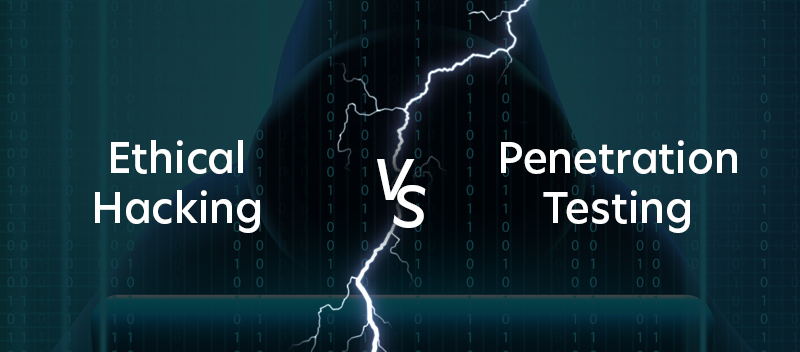
Penetration testing is gaining so much traction that it is estimated that by 2025, it will be a $4.5 billion industry (Gartner). But what about ethical hacking? Do these two approaches represent distinct settings in the cybersecurity environment, or are they just different names for the same idea? Let’s examine this more to see if there are any differences between them. Ethical Hacking vs. Penetration Testing: Key Differences Understanding the roles of ethical hackers and penetration testers is essential. Both are pivotal in defending digital landscapes, yet their functions and approaches hold distinct differences that are important to grasp. 1. Ethical Hacking Ethical hacking is a proactive approach that encompasses a wide array of techniques aimed at securing IT environments. As an ethical hacker, you perform tasks like: Web application hacking to secure online platforms. System hacking to ensure your internal networks are robust. Web server hacking to protect against unauthorized access. Wireless network hacking for safeguarding Wi-Fi connections. Social engineering tests to prevent manipulation of individuals within your organization. The ultimate goal here is to preemptively identify vulnerabilities before malicious hackers can exploit them, using a holistic approach to enhance overall security. 2. Penetration Testing On the other hand, penetration testing is more targeted and structured. It involves a coordinated assessment where an independent team is brought in to simulate cyberattacks on specific systems. This is done with the scope and boundaries clearly defined by you, the client. Here’s how it works: Scope Definition: You decide which systems to test and the methods allowed. Execution: The penetration tester simulates attacks based on your criteria. Exploitation: Any vulnerabilities found are exploited to understand the potential risks, providing you with a detailed analysis of the system’s weaknesses. Similarities Despite their differences, ethical hacking and penetration testing share common ground. Both roles are dedicated to: Identifying vulnerabilities in IT systems. Helping you prevent a wide array of cyberattacks. Strengthening your cybersecurity posture through thorough analysis. By understanding these nuances, you can better leverage these practices to protect your digital assets effectively. Learn more about our Penetration Testing services Here Ethical Hacking: A Deeper Dive Ethical hackers play a crucial role in keeping your systems safe from malicious threats. Let’s explore how they operate to protect your digital assets. – Authorized Access Ethical hackers are granted permission to access systems and networks, setting them apart from their malicious counterparts. With authorized access, they can delve into your digital infrastructure without legal repercussions, ensuring that their activities are both compliant and beneficial to your organization. – Simulate Attacks One of the most fascinating aspects of ethical hacking is the ability to simulate real-world cyberattacks. By mimicking the strategies used by cybercriminals, ethical hackers can test your defenses and understand how your systems would hold up under pressure. These simulations include: Reconnaissance: Gathering intelligence on your systems, much like an adversary would. Gaining Access: Exploiting potential vulnerabilities to see how far they can penetrate. Maintaining Access and Clearing Tracks: Ensuring they can sustain a presence and then erase evidence of their testing, all while within legal bounds. Identify Vulnerabilities: At the heart of ethical hacking is vulnerability identification. Ethical hackers employ a combination of technical skills and creative thinking to uncover weaknesses that could be exploited by real attackers. This might involve: Scanning and Testing: Using tools to find and analyze security gaps. Reporting: Documenting findings with recommendations to bolster your defenses. By identifying and addressing these vulnerabilities, ethical hackers help ensure that your systems are resilient against evolving cyber threats. Penetration Testing: A Closer Look Diving into penetration testing can seem daunting, but with a clear understanding of the process, you can see how it fortifies your cybersecurity defenses. Let’s break it down step-by-step. 1. Scope Before any testing starts, it’s essential to establish clear boundaries. This is where scoping comes into play. Together, we draft a pre-engagement contract that acts as our roadmap. This document outlines the rules of engagement, priorities, timeframes, and methods for the test. It ensures everyone is aligned and provides legal protection, establishing a safe environment for the testers to operate within your systems. 2. Methodology Penetration testing methodologies vary based on the perspective and depth you require: Black Box Testing: This method utilizes an external hacker who has no prior knowledge of your system. This method tests your defenses from an outsider’s view, highlighting vulnerabilities that could be exploited by real-world threats. White Box Testing: Now, think of an insider with full access to your system’s intricacies. This approach allows for a thorough examination, uncovering vulnerabilities that might not be visible from the outside. Gray Box Testing: This is a blend of both worlds. It provides partial knowledge of the system, focusing on specific areas that could be susceptible, giving a balanced view of your security posture. 3. Testing Phases The penetration testing journey is structured into several key phases: Reconnaissance: This detective work involves gathering as much information about your systems as possible. It’s about understanding the landscape before diving in. Penetration Attempt: Here’s where the action happens. Testers actively try to exploit vulnerabilities, simulating how far an attacker could go, whether it’s accessing confidential data or altering system configurations. Reporting: After the tests, a detailed report is crafted. This document outlines the vulnerabilities discovered, the methods used, and actionable recommendations to strengthen your defenses. Re-Testing: Implementing changes is just the beginning. Regular re-testing is crucial to ensure that fixes are effective, and your systems remain resilient, especially after infrastructure changes. By understanding these aspects, you can better navigate the penetration testing landscape, ensuring your systems are fortified against potential threats. Penetration Testing as a Service (PTaaS) Penetration Testing as a Service (PTaaS) has emerged as a robust solution to enhance your security posture. Let’s explore how PTaaS works and what benefits it can bring to your organization. Penetration Testing as a Service (PTaaS) Definition PTaaS combines automated techniques with expert analysis to uncover vulnerabilities that traditional scanning tools might miss. By offering both point-in-time and
Managed Security Services: Your Partner in Cybersecurity Defense

As cyber threats become increasingly sophisticated, defending your organization’s data demands more than just basic measures — it requires a robust, proactive strategy. The role of a managed security service provider (MSSP) is crucial in navigating these challenges. By partnering with an MSSP, you gain access to specialized managed security services that not only fortify your defenses but also offer peace of mind. With cyber threats evolving by the minute, a strategic partnership in cybersecurity defense provides a comprehensive shield against potential vulnerabilities. This comprehensive guide explores the value of managed security services (MSSPs) and provides insights into how partnering with an MSSP can enhance your organization’s security posture and mitigate risks. The Challenges of In-House Security Managing cybersecurity internally can often feel overwhelming. Here are some core challenges you might face: Resource Constraints Budget Limitations: Building and maintaining a dedicated cybersecurity team can be expensive. Many organizations find that their budgets fall short of covering the costs of hiring and retaining skilled professionals essential for robust, managed IT security. Talent Shortages: The demand for qualified cybersecurity experts often outpaces supply. This makes it difficult to find and hire the talent necessary to safeguard your organization’s data effectively. Evolving Threat Landscape Constant Changes: Cyber threats evolve at an alarming pace. Keeping up with new vulnerabilities and attack vectors requires continuous learning and adaptation, which is not always feasible for in-house teams stretched thin. Expertise Demand: Staying ahead of the threat curve demands expertise and resources that many organizations struggle to maintain on their own. Cost-Effectiveness of Outsourcing Financial Efficiency: Outsourcing to an MSSP can prove cost-effective. While internal teams require significant investment in salaries, training, and technology, an MSSP offers a comprehensive security solution without the hefty overhead. Access to Expertise: By partnering with an MSSP, you gain access to a pool of experts and advanced security solutions, enhancing your organization’s defense capabilities more efficiently and effectively. Facing these challenges alone can be daunting. However, with the right MSSP partnership, you can bolster your security posture while optimizing costs and resources. Learn more about our Managed Security services Here The Value of a Managed Security Service Provider When it comes to securing your organization, a Managed Security Service Provider (MSSP) can be a game-changer. Let’s explore how: 1. Expertise and Specialization MSSP Expertise: One of the most significant advantages of partnering with an MSSP is tapping into their specialized expertise. These providers are packed with professionals who live and breathe cybersecurity. They are equipped with the latest knowledge and tools necessary to defend against sophisticated cyber threats. 2. 24/7 Monitoring and Response Continuous Vigilance: Imagine having a security team that never sleeps. MSSPs offer 24/7 security monitoring, ensuring that your organization’s defenses are always on alert. This continuous vigilance means that any potential threats can be identified and mitigated in real time, minimizing the risk of data breaches. Rapid Response: Should a security incident occur, having an MSSP on your side means you benefit from a swift response. Their teams are trained to react quickly and efficiently, reducing the impact of security incidents on your operations. 3. Scalability and Flexibility Adapting to Your Needs: As your organization grows, so do its security needs. The scalability of managed security services allows MSSPs to adjust their offerings to align with your changing requirements. Whether you’re expanding your IT infrastructure or facing new threats, an MSSP offers the flexibility to adapt and ensure comprehensive protection. Cost-Effective Adjustments: Instead of investing heavily in new resources every time your needs change, MSSPs provide a scalable solution that adjusts without the need for substantial additional investments. In short, partnering with an MSSP equips you with the expertise, continuous monitoring, and adaptable security strategies needed to protect your organization effectively. With these benefits, you can focus on your core business activities, knowing your security is in capable hands. Key Services Offered by MSSPs Managed Security Service Providers (MSSPs) offer a suite of essential services to keep your organization secure. Here’s a closer look at some critical offerings: Security Operations Center (SOC) Around-the-Clock Monitoring: A Security Operations Center is the nerve center of your cybersecurity framework. Its primary role is to monitor your systems 24/7, detecting and analyzing security threats in real time. This constant vigilance means you can rest easy knowing that any suspicious activity is being watched closely. Proactive Threat Response: The SOC is not only about monitoring; it’s also about response. When threats are identified, the SOC team acts swiftly to neutralize them, ensuring minimal disruption to your operations. Incident Response Rapid Reaction: In the unfortunate event of a cyberattack, MSSPs offer specialized incident response services to minimize damage. Quick action is critical, and MSSPs are equipped to respond rapidly, containing threats and initiating recovery processes to get you back on track. Expert Guidance: An MSSP provides not just technical support but also strategic advice, helping you understand the implications of an attack and how to fortify your defenses moving forward. Vulnerability Management Regular Assessments: Staying ahead of vulnerabilities is crucial. MSSPs conduct regular vulnerability assessments to identify weaknesses in your systems before they can be exploited. This proactive approach helps in safeguarding sensitive information. Remediation Strategies: Once vulnerabilities are identified, MSSPs work with you to implement remediation strategies, effectively closing the gaps in your security defenses. Threat Intelligence Staying Informed: Access to threat intelligence feeds is invaluable in staying ahead of emerging threats. MSSPs provide up-to-date intelligence, informing you about the latest cyber threat trends and tactics. Strategic Advantage: Comprehensive threat intelligence allows you to make informed decisions about your security posture, allowing you to anticipate and thwart potential attacks before they occur. In summary, MSSPs offer a robust defense against cyber threats, allowing you to focus on what you do best — running your business. Selecting the Right MSSP Partner Choosing the right Managed Security Service Provider is crucial for enhancing your organization’s security posture. Here’s a guide to help you make an informed decision: — Evaluation Criteria Experience Matters: Look for
Back to School: Educating Teams on Cybersecurity Risks

As the leaves start to fall and the school year begins, students should not be the only ones gearing up for new lessons. For organizations, this season offers a great chance to revisit and refresh their cybersecurity awareness training. In today’s tech-driven world, having strong cybersecurity knowledge is more important than ever. With cyber threats evolving constantly, providing ongoing cybersecurity education for employees is essential to keep sensitive information safe. In this guide, we will explore strategies for corporate trainers and educational coordinators to create engaging and effective cybersecurity training that helps employees identify, mitigate, and stay vigilant against cyber threats. The Cybersecurity Challenge: Why It Matters With cyber threats on the rise, from phishing scams to ransomware, businesses face greater risks daily. A successful cyberattack can have consequences, from financial losses to reputational damage. Here are some challenges every business must know: Rising Threats: Cyberattacks and data breaches are becoming alarmingly common. From phishing scams to ransomware, these threats are evolving in complexity and frequency. Every click and download can be a potential gateway for malicious activity, making vigilance more important than ever. Financial Losses: A single breach can result in hefty financial damages, including fines and the cost of recovery. Reputational Damage: Trust is hard to build and easy to lose. A cyberattack can severely tarnish an organization’s reputation, causing long-term harm. Regulatory Compliance: With regulations tightening globally, non-compliance due to a breach can lead to legal repercussions. Employee Role in Defense Employees are on the frontline of defense against cyber threats. Their role is pivotal in maintaining security: Identification: Recognizing suspicious activity quickly can prevent potential breaches. Mitigation: Proper training empowers employees to take immediate action against threats, reducing risk. Continuous Learning: As cyber threats evolve, so should employee awareness and skills in cybersecurity. Incorporating these elements into your cybersecurity strategy ensures a comprehensive defense, making both the organization and its employees more resilient against cyber threats. For more on our Cybersecurity Risk Assessments services, Click Here Engaging Your Team: Strategies for Effective Training Keeping your team engaged in cybersecurity training can be challenging, but with the right strategies, it can become an integral part of your organization’s culture. Here’s how you can make training more impactful: 1. Variety in Training Approach Interactive Workshops: Hands-on sessions where employees can practice their learning in real time. Cybersecurity Simulations: Mock exercises help test and enhance employees’ reactions to threats. Online Modules: Flexible learning that employees can complete at their own pace. Gamification: Turn cybersecurity learning into a fun, game-like experience to encourage active participation. 2. Practical and Relevant Training should be more than just theory; it should be directly applicable to what your employees do every day. Focus on: Cybersecurity Training: Provide scenarios and exercises that mirror real-world tasks they encounter. Cybersecurity Best Practices: Teach strategies and habits that employees can integrate into their daily routines to enhance security. Beyond Training: Fostering a Culture of Awareness Training is just the beginning. To truly safeguard your organization, you must cultivate an ongoing culture of cybersecurity awareness. — Regular Communication A robust cybersecurity communication plan is vital. Keeping everyone informed about the latest risks and updates to company policies ensures that cybersecurity remains a top priority. Regular communication can include: Newsletters: Share updates on emerging threats and protective measures. Meetings: Regularly scheduled discussions to address concerns and reinforce best practices. Alerts: Immediate notifications about new threats or policy changes. — Phishing Simulations Conducting phishing simulations is an effective way to test employees’ vigilance in a safe environment. These exercises help identify weaknesses and provide insights into areas needing improvement. Benefits include: Awareness: Employees become more alert to potential scams. Feedback: Gain valuable information on how employees handle suspicious emails. Improvement: Tailor additional training to address identified gaps. — Recognition and Rewards Acknowledging those who excel in cybersecurity practices boosts morale and encourages a security-conscious mindset. Consider implementing: Employee Recognition for Cybersecurity: Highlight individuals or teams that consistently demonstrate strong awareness. Incentives: Offer rewards, such as gift cards or additional vacation days, for exemplary behavior. Public Acknowledgment: Share achievements in company-wide communications to inspire others. By fostering a culture where cybersecurity is part of everyday conversation and behavior, your organization can enhance its resilience against threats and ensure that every team member plays a role in maintaining security. TrustNet: Your Cybersecurity Training Partner TrustNet ensures your team is equipped with the knowledge and skills needed to navigate the complex landscape of cybersecurity. 1. Expertise TrustNet is renowned for its expertise in delivering effective cybersecurity awareness training solutions. We are aware that when it comes to cyber risks, your workers are both your most valuable resource and your most susceptible point of entry. Our goal is to turn your staff into a strong line of defense against cyberattacks using our solutions. 2. Services and Resources Our Enterprise Awareness Training Platform is a comprehensive solution, combining immersive online education with testing to deliver top-notch security awareness content and phishing training. Key features include: Customized Cybersecurity Training: We design our programs to meet your company’s specific needs, ensuring that the instruction is applicable and effective. Expert Trainers: The training is interesting and successful because of the real-world expertise and insights that our team of seasoned professionals brings to the table. Ongoing Support: Beyond the initial training, we provide continuous support to keep your team updated on the latest threats and best practices. User Training: A wealth of educational materials, from engaging articles and graphics to interactive games and movies. User Phishing: Advanced phishing, vishing, and smishing simulations with thousands of templates to choose from. Reporting: Detailed reporting options that provide valuable insights for management, ensuring you’re always informed about your team’s progress. TrustNet’s training solutions and customized programs ensure that your organization remains resilient, with employees well-prepared to face the ever-evolving landscape of cyber threats. Empowering Your Team for a Secure Future Fostering a robust cybersecurity culture within your organization is not just beneficial —it’s essential. Ongoing team education and awareness are vital in
Cyber Risk Assessment 101: A Back-to-School Guide

As the school year kicks off, students are not the only ones who have the chance to dive into fresh learning opportunities. This back-to-school season is a perfect time for businesses and individuals to brush up on something crucial — cybersecurity. In a more connected world, understanding how to protect our digital spaces has become vital. Cyber risk assessment is your first line of defense, helping you spot potential threats and mitigate risks before they become problems. This guide is designed to walk newcomers and seasoned tech enthusiasts through the essentials of cyber risk assessments, offering a solid foundation in this ever-important field. The ABCs of Cyber Risk Understanding the basics of cyber risk can feel like learning a new alphabet. Let’s break it down into simple terms. A: Assets Assets are the foundation of any organization and protecting them is critical. Here’s a closer look at what these assets encompass: Data: This includes everything from customer data, like contact information and transaction histories, to intellectual property, such as patents and proprietary algorithms. Systems: These are the backbone of operations, including physical servers, cloud services, and networking equipment — all critical for day-to-day functioning. Applications: These comprise software like CRM systems, financial applications, and communication tools, each integral to business processes. By identifying these assets, you can prioritize your security measures and ensure the protection of your organization’s most valuable aspects. B: Threats Cyber threats constantly evolve and understanding them is crucial to developing an effective security strategy. Let’s dive into some common threats: Phishing Attacks: Malicious emails designed to trick individuals into revealing sensitive information. Malware: Ransomware and other malicious software can disrupt or gain unauthorized access to systems. Insider Threats: Employees or associates accessing your systems can maliciously or inadvertently harm the organization. Understanding these threats allows you to build a defense strategy that protects your assets and mitigates risks. C: Controls Adequate controls are essential to mitigate these risks and protect assets. Here’s how some essential controls work: Firewalls: These act as a barrier to prevent unauthorized access. Access Controls: Limit access to sensitive information through role-based user permissions. Encryption: Protect sensitive information by encoding it, ensuring only authorized parties can access it. Multi-Factor Authentication (MFA): Adding an extra layer of security by requiring multiple forms of verification before granting access. Together, these controls form the foundation of your cybersecurity strategy, helping you safeguard your digital environment. For more on our Cybersecurity Risk Assessments services, Click Here The Risk Assessment Process: A Step-by-Step Guide The risk assessment process is your roadmap to understanding and mitigating cybersecurity threats. Following these simple steps can ensure a systematic approach to protecting your organization’s assets. Step 1: Identify Assets Review your organization’s critical assets, such as data, systems, and applications. Classify them based on their importance and sensitivity. Understanding what you have will help you prioritize your efforts. Step 2: Threat Identification Gather your team and brainstorm potential threats. Consider common scenarios like cyberattacks, natural disasters, or insider threats. You can also use tools like SWOT analysis to identify strengths, weaknesses, opportunities, and threats. Step 3: Risk Analysis Evaluate each identified threat by considering both likelihood and potential impact. A risk matrix helps visualize these factors, plotting risks based on their probability and severity. This visual can guide your understanding of which risks require immediate attention. Step 4: Risk Prioritization Once you’ve assessed your risks, prioritize them based on severity and likelihood. Focus on those with the most pressing risks, ensuring you protect your critical assets and allocate adequate resources. Step 5: Risk Mitigation Implement strategies to mitigate identified risks, including: Patching Vulnerabilities: Regularly update systems and software to address known vulnerabilities. Implementing Controls: Use firewalls, encryption, and multi-factor authentication to protect against unauthorized access. Step 6: Continuous Monitoring Cyber threats are constantly evolving. Regular monitoring allows you to adapt your strategies and defenses accordingly. Review and update your risk assessments to stay ahead of new vulnerabilities and threats. Beyond the Basics: Resources and Support Once you’ve mastered the basics, it’s time to explore more advanced techniques to elevate your strategies. Here’s how you can further your journey: Kickstart with these beginner-friendly materials, which are perfect for building a solid foundation in cyber risk assessment. — Check out our TrustNet blog posts and guides: Cybersecurity Risk Assessment Guide Qualitative vs. Quantitative Risk Assessments in Cybersecurity What is Compliance Risk Management IT Risk Assessment Guide Cyber Security Risk Management Fundamentals — Advanced Techniques For those looking to move beyond the basics, delve into advanced methodologies such as: Quantitative Risk Analysis: Using statistical models to predict risk. Scenario Analysis: Simulate potential cyberattack scenarios to test your organization’s defenses. Threat Intelligence Integration: Incorporating real-time threat data into risk assessments. — TrustNet’s Expertise: Your Partner in Cyber Risk Assessments Partnering with a trusted cybersecurity provider like TrustNet ensures your organization is prepared to handle cyber threats effectively. Here’s how we can help. Comprehensive Risk Assessments: We conduct thorough evaluations to ensure that all aspects of Information Security — confidentiality, integrity, and availability — are upheld, providing a robust defense against potential threats. Clear Roadmap for Management: Our assessments result in a detailed, actionable roadmap that identifies potential security gaps, equipping management with the insights to make informed decisions. Technical Recommendations: TrustNet delivers precise, technical recommendations tailored to your unique context to strengthen your organization’s defenses and mitigate identified risks. Ongoing Support: Beyond initial assessments, TrustNet offers continuous support, monitoring, and updates to adapt to changing cybersecurity landscapes, ensuring enduring protection and resilience. Guidance for All Stages: Whether you’re beginning your cyber risk management journey or refining an existing strategy, TrustNet provides expert advice and resources to navigate complex challenges. Adaptation to Evolving Threats: We keep pace with the dynamic nature of cyber threats, constantly updating our strategies and tools to safeguard your assets in an ever-evolving digital world. Ready to Strengthen Your Cybersecurity? As explored throughout this guide, regular cyber risk assessments are crucial in safeguarding your organization’s digital assets and ensuring


